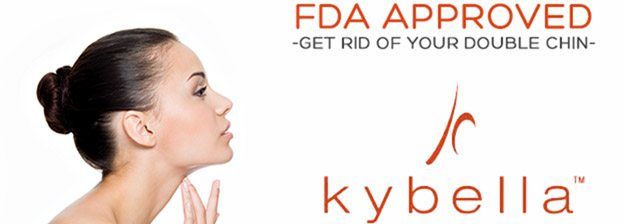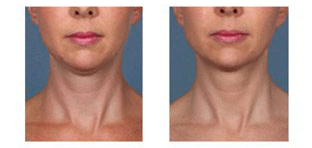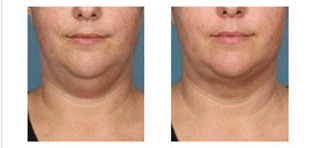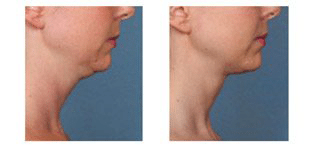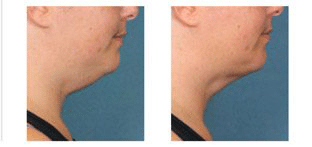What is Kybella?
Maybe that extra fullness beneath your chin is something you’ve had your whole life, something that developed over the years, or something you noticed recently. This may be a condition called submental fullness, or “double chin.”
Kybella is a prescription medicine used in adults to improve the appearance and profile of moderate to severe fat below the chin (submental fat), also called “double chin.”

- Individually tailored
- Injectable
- Permanently destroys fat cells in the treatment area under the chin
- Improves the chin profile
You and your healthcare specialist will tailor a series of treatments for you based on:
- How much fat is beneath your chin
- Your aesthetic goals
How does Kybella (deoxycholic acid) injection 10 mg/mL work?
When injected into the fat beneath the chin, Kybella permanently destroys fat cells. Your body’s natural metabolism then processes the fat cleared from the treatment area. Once the fat cells are gone, you’re left with a noticeable reduction in fullness under the chin. The active ingredient in Kybella is synthetic deoxycholic acid. Deoxycholic acid is a naturally occurring molecule in the body that helps break down fat.

What you can expect
Your healthcare specialist may use cold packs or local anesthesia to help make you more comfortable
The injection process may take 15-45 minutes
Multiple sessions may be required for maximum results
After Treatment
Although you may be excited to see results right away, it’s important to be patient. Allow your body time to process the fat cleared from the treatment area after each visit
What are the possible side effects?
Sometimes serious side effects can occur, including nerve injury in the jaw that can temporarily cause an uneven smile or facial muscle weakness (experienced by 4 out of 100 people in clinical studies) and trouble swallowing (experienced by 2 out of 100 people in clinical studies). The most common side effects in the treatment area include: Side effects are usually temporary and often resolve on their own.
- Swelling
- Bruising
- Pain
- Numbness
- Redness
- Areas of hardness




